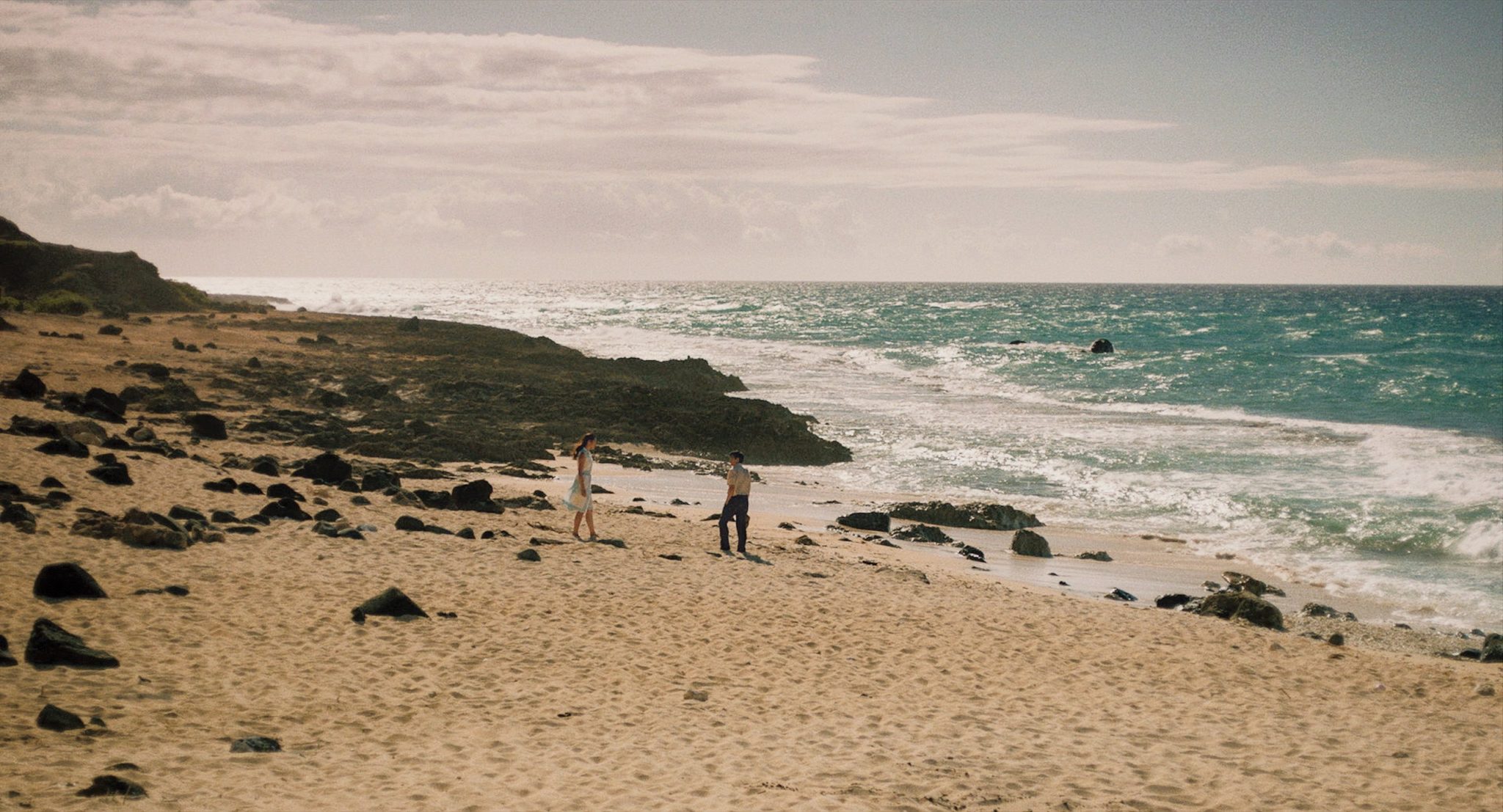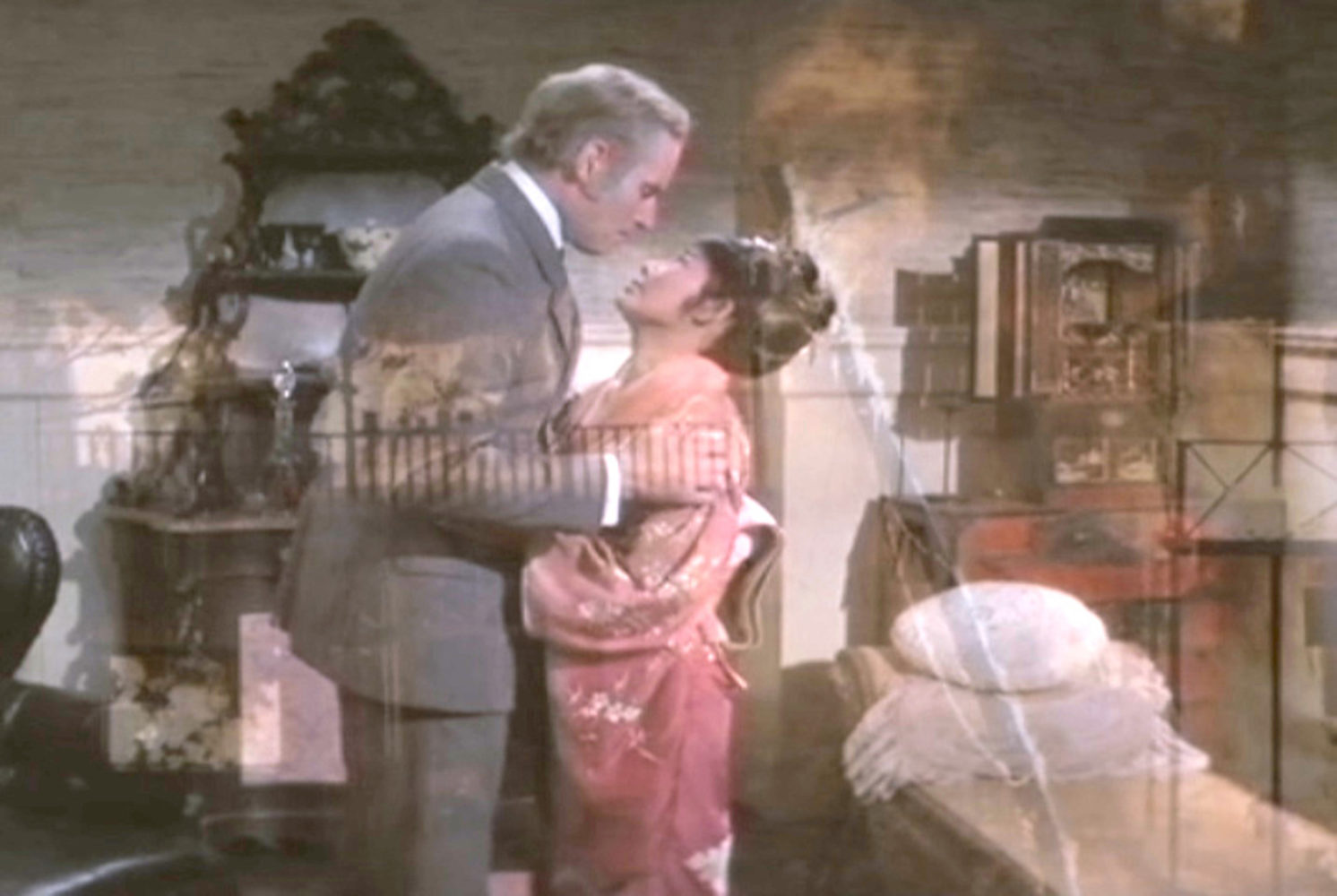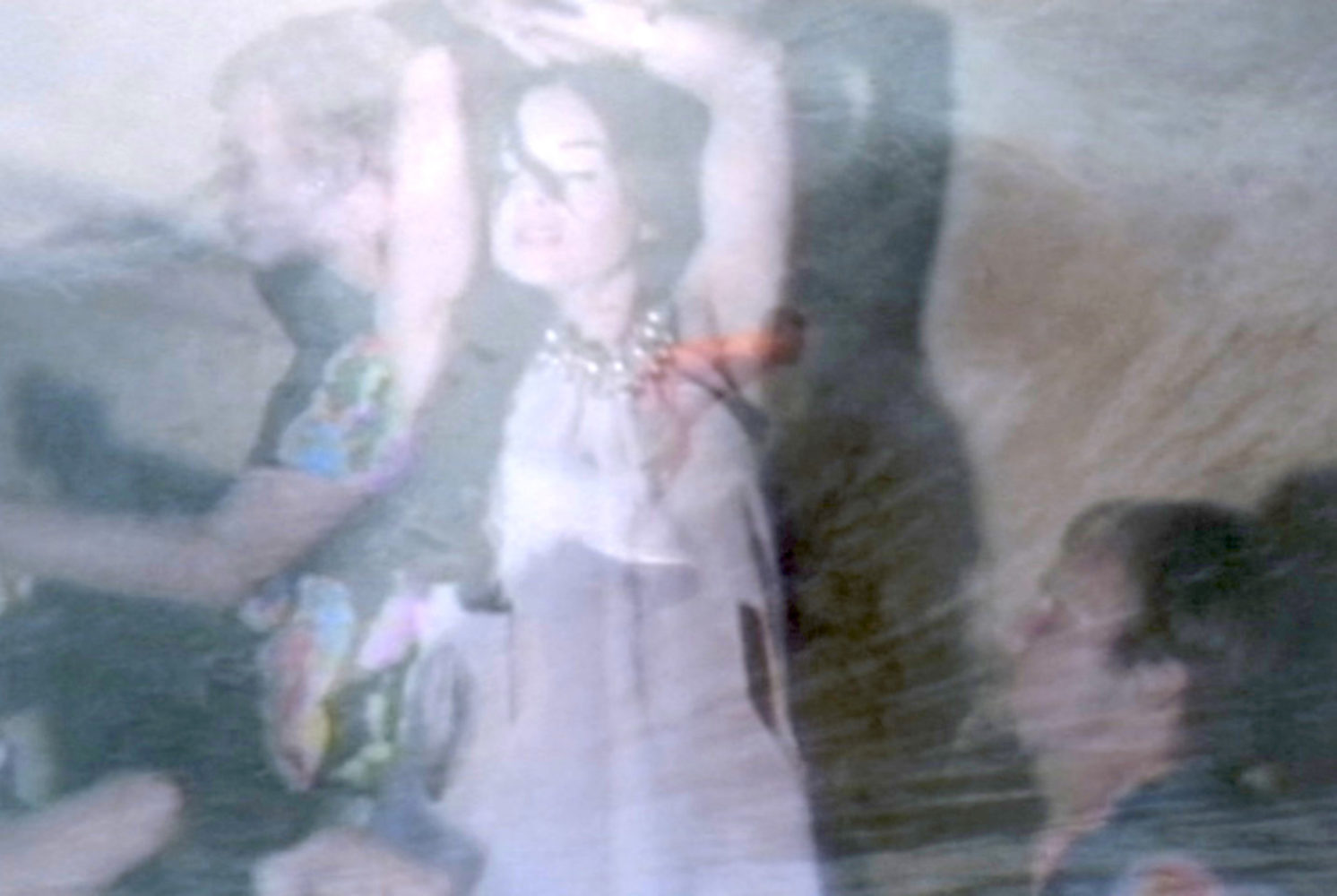Memory, sorrow, and colonial fantasies continue to cycle anew in the filmmaker’s oeuvre with startling artfulness.
On March 3, the Hawai‘i-born filmmaker Christopher Makoto Yogi’s feature film I Was a Simple Man (2021) sees its streaming premiere exclusively on the Criterion Channel. Plaintively described as a “ghost story,” its programming on the platform is also joined by another subdued achievement, his Hawai‘i Island feature August at Akiko’s (2018), and a selection of seven shorts from the past thirteen years. Collectively, they compose perhaps the largest body of Hawai‘i-related cinema from a single filmmaker yet on the American streaming service.
Preceding this online release, Vincent Bercasio spoke with Yogi about the maturation of his practice, how local politics surface in his filmography, and the outsized influence of the Taiwanese New Wave.
VINCENT BERCASIO Hello, Chris!
CHRISTOPHER MAKOTO YOGI Hi, Vincent. It’s nice to see you again.
VB Firstly, I hope you and your family are doing well.
CMY Yeah, we’re doing great!
VB I’m happy to be talking and to get an opportunity to revisit your work. It’s beautiful seeing the common threads, repeating motifs, and even some of the same actors in your films, and how they grow and evolve throughout the years. One thing that stood out to me in particular were the repeated shots of [tower] cranes.
CMY You know, there’s that old joke, the crane is the state bird of Hawai‘i [laughs]. Everywhere you look, there’s a crane, there’s some kind of development going on. Hawai‘i is a place that’s being pulled in two different directions, and the crane is a really great encapsulation of that.
VB It’s especially emblematic of this idea of Hawai‘i as a construction, both literal and figurative. Layover, on the Shore (2009) concludes with ambient sounds of construction. In I Was a Simple Man, they open the film with an almost aggressive loudness. How have those ideas evolved for you between the two films?
CMY I actually hadn’t watched Layover, on the Shore in many years, and only just recently took a look at it because I had forgotten what a lot of the film was. There’s a theme that runs through both works, of buildings, concrete, development. While producing Simple Man, so much of what I was thinking about was this idea of the land being covered up. The concrete being this mud that envelops everything. Over the course of the film, nature breaks through in spite of that. Before shooting, Akiko [Masuda, an actor in August at Akiko’s] was telling me how she grew up in Kalihi before moving to the Big Island in the ’80s. I asked her if she ever came back. She said, “No, I never go back. When I go back, it’s just concrete…that’s all I see, everywhere.” And when I got back, that’s all I ended up seeing too. But sometimes I would be walking around and I’d see roots busting through the concrete, or a plant emerging through the cracks in the wall. Akiko is right that there’s concrete everywhere now, but over time, if you were to take a more geological view of time, I think nature wins.
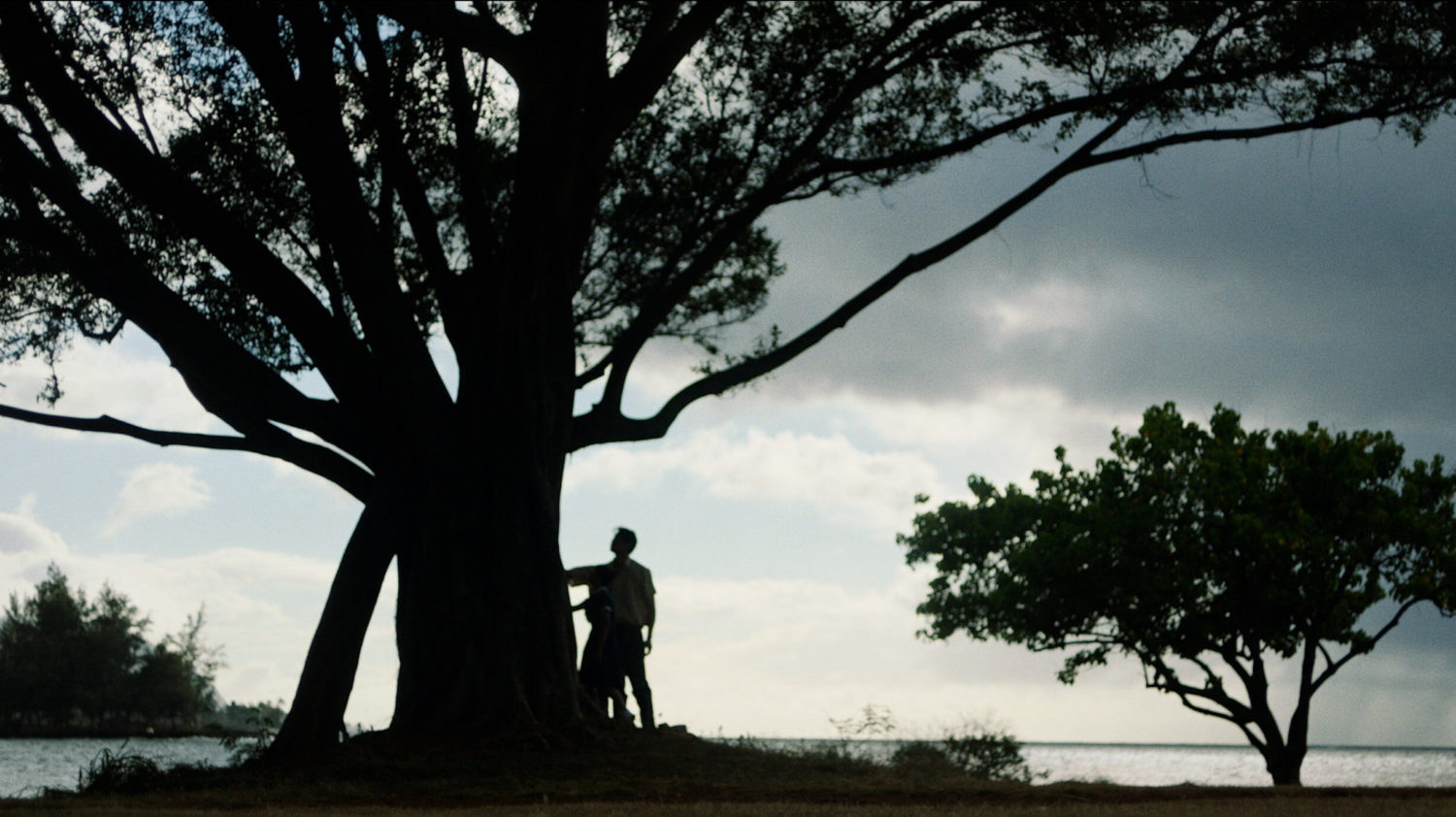
VB Nature eventually reclaims itself.
CMY Exactly, given time. Simple Man is essentially telling that story. In regards to the soundwork, that was something we found in post-production. We knew there would be some kind of industrial sound at the beginning, but we didn’t know we were gonna go that big until we were in the mix. I just love this idea of confronting the audience upfront with an abrasive wall of sound that they must pass through. It’s something like an entrance or a cleansing. You have to pass through this grinding barrier, then the film starts in earnest, becoming a much quieter experience onward.
VB Sound in general plays a beautiful role in your films. I grew up in an area that had relatively little development, then came a Wal-Mart, a few shopping centers, and then the rail, so those construction sounds ended up becoming very familiar to me.
CMY Yes, and that’ll continue, cause the rail will definitely make noise, even though they say it’s supposed to be pretty quiet. It’ll be like living by a subway in New York, just a constant sonic interruption in daily existence.
Growing up with the version of Hawai‘i that’s sold to the world created a real cognitive dissonance. I’m still questioning what a real Hawai‘i is.
Christopher Makoto Yogi
VB I wanted to mention the role that Hawai‘i and Hawaiian politics plays in your films. They’ve always been present in your work, but Simple Man defines its presence more clearly.
CMY It’s important that Hawai‘i’s political dimensions are incorporated into the work on a more subtle level. They aren’t necessarily making up the narrative of the film, but they are integral to the tellings of the stories. The production of Simple Man was a really interesting experience because we started shooting in the midst of the TMT protests, which rippled out to the rest of the islands. We were in this production bubble on the North Shore, and it wasn’t until the first weekend of shooting that I figured out through social media what was going on at the mauna. Throughout Hale‘iwa, we saw all these flags coming up, and there were protests going on that were impossible to ignore in this very exciting, energizing way. We were seeing the movement awaken, the nation rise, it was so beautiful. Meanwhile, here we were shooting this movie, which suddenly started to feel totally unimportant [laughs]. At one point, I asked myself, “Should we stop shooting?” The statehood elements were already integrated into the script, but during production, it felt even more important that Hawai‘i’s colonial history was incorporated in a way that hopefully inspires those unfamiliar to seek out, to learn more. It touches upon it enough, I hope, that it will motivate viewers to educate themselves.
VB The political potential of films should never be doubted, I think, even if their function is more reflective than propulsive. I saw Occasionally I Saw Glimpses of Hawai‘i (2016) and Anthony Banua-Simon’s Cane Fire (2020) around the same time, which made it click for me that there are ways, even through recontextualized imagery alone, to politically subvert the narrative imposed on Hawai‘i. Both are a sort of destruction of images, a catharsis.
CMY When I made Occasionally it was never supposed to be a film project. It started off as me just saying, “I’m gonna sit down and watch these images that I’ve avoided for my entire life.” Growing up in Hawai‘i, I thought, “Why should I waste my time watching these movies? They’re not for me. They’re for the outside world.” I eventually came to think I should at least be in dialogue with them and educate myself on what these images are. So I started to watch everything. I started to see films quoting films quoting films, artifice upon artifice upon artifice. The most interesting part, though, was when it played at HIFF. Most of Occasionally came from a very angry place. Then at the screening, people would come up to me and say, “That film was so beautiful, it reminded me of my childhood, it took me back to the good old days.” Cinematic images become memory in this way that’s almost indistinguishable from our personal memories. It becomes the lens in which we look through our own lives. It remotivated me about the importance of producing images that counteract that narrative, not only for the rest of the world, but for people who have lived in the islands their entire lives.
VB There’s a certain comfort in those colonial fantasy Hawai‘i depictions that a lot of people I know find warmth in. It’s unfortunate that it takes up a large bulk of what we have to work with.
CMY I guess in a way I shouldn’t have been surprised at their reactions. For me, growing up with the version of Hawai‘i that’s sold to the world created a real cognitive dissonance. I’m still questioning what a real Hawai‘i is. Of course, my experience of everyday life there differs from that of my friends, people I don’t know, other parts of the islands, the outer islands…these questions were always spinning in my head. For me, the reaction was a sense of detachment from Hawai‘i as a young person. I felt very alienated from the place in which I was living. Now, I look back and think, “That’s really unhealthy.”
Each part is both imagined and real at the same time. Cinema is one of the great art forms where we can interrogate these tensions.
Christopher Makoto Yogi
VB Would you say it took leaving the islands to gain that renewed connection?
CMY When I left the islands to move to LA, I was in this very disorienting period of my life. My father had just passed away, and at the same time, I was living outside of the islands for the first time of my life. It was a period that was full of grief and longing which channeled itself into a deep sense of homesickness. Every time I sat down to write, the pieces would be set in Hawai‘i. I was already interested in telling stories from a local perspective, but it didn’t really crystallize until after I had left.
VB Did the films you watch over the years shape your idea of what’s possible within Hawai‘i?
CMY One-hundred percent. The biggest influence was the Taiwanese New Wave. It wasn’t until I started watching films by Hou Hsiao-Hsien, Tsai Ming-liang, and Edward Yang that I started to understand cinema’s ability to capture the history of a place in a way that’s both personal and incredibly artful. They’re all touching upon the history of colonialism in Taiwan, often not so overtly, and it opened my brain to the possibility to tell stories about home that are simultaneously localized, personal, political, and cinematically progressive.
VB Layover felt a little like a Tsai Ming-liang film to me. [Yogi laughs.] I really appreciated those shots of the Chinatown streets at night for that reason, and another, more incidental one—you were capturing an era of Chinatown that doesn’t really exist anymore. So much of it looks and feels different today.
CMY Yeah! That goes back to what we were talking about earlier in how film can incidentally capture a specific window of time.
VB Have you seen Los Angeles Plays Itself? There’s a quote from it that goes, “If we can appreciate documentaries for their dramatic qualities, perhaps we can appreciate fiction films for their documentary revelations.”
CMY That’s amazing. When I think of fiction and documentary, it’s more of a spectrum than it is a binary. Obviously, hybrid filmmaking is really in vogue now, but even creating fiction films, you can’t control everything, and every documentary film has elements of fiction in it.
VB Even towards the beginning of the documentary form, you have stuff like Nanook of the North, the city symphonies, it’s all very deliberately constructed.
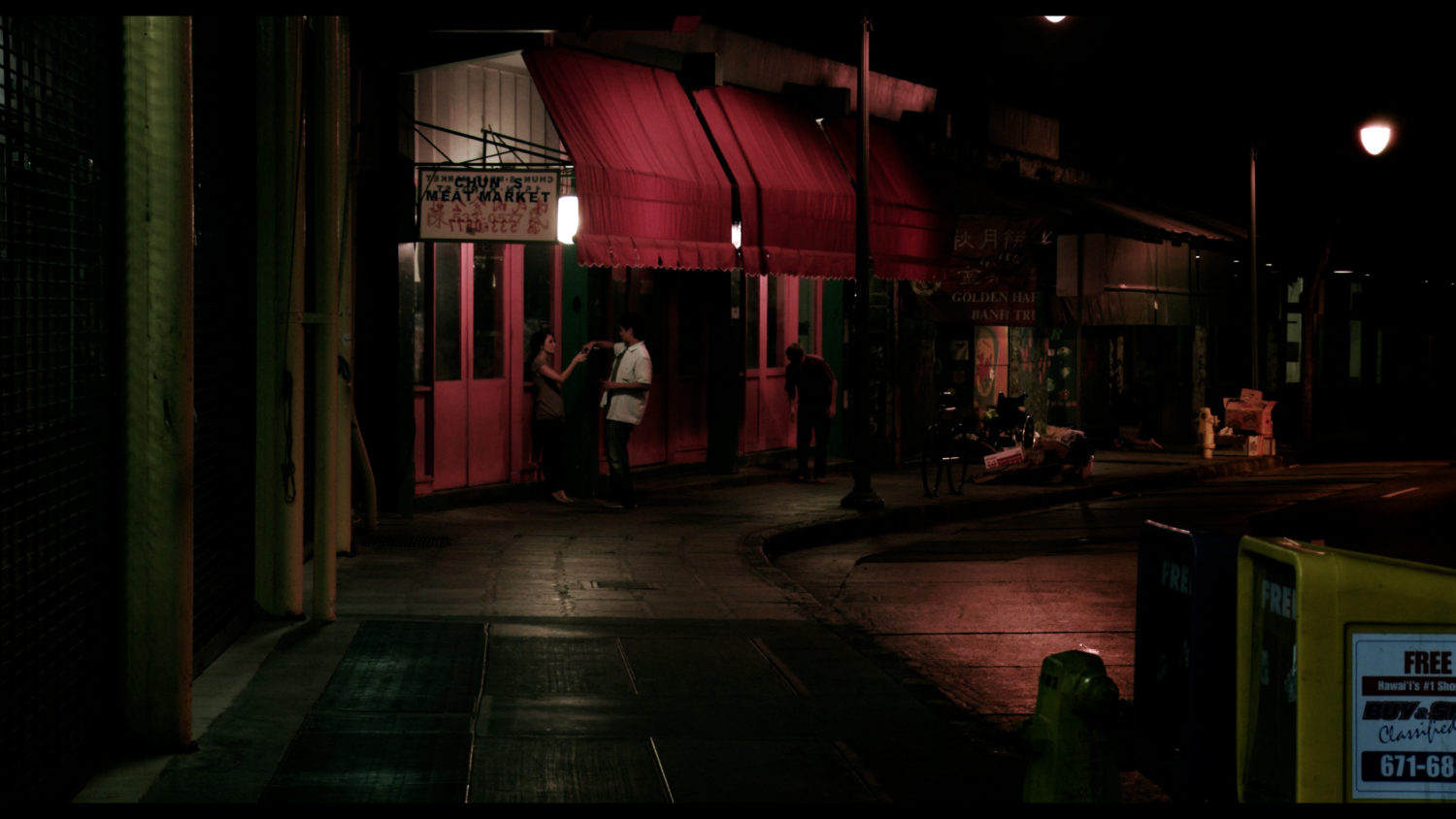
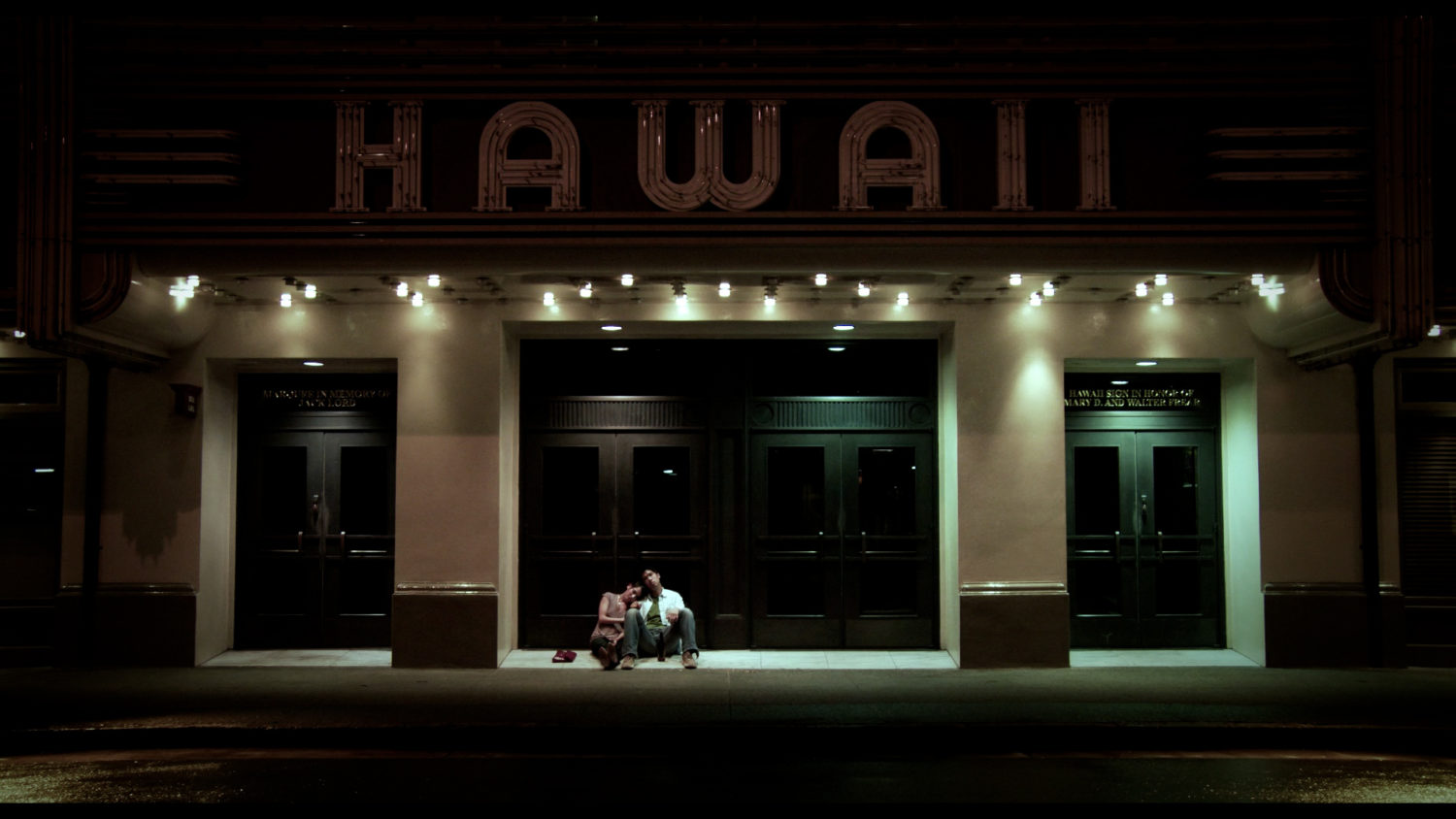
CMY It’s funny that where cinema started was more or less operating in that hybrid form, then somewhere along the way it got barricaded off into a binary when they crossover more than we would like to think.
VB On the other hand, you have stuff like the shorts of Lumière and Edison that are incredibly pure. Technologically, it was a miracle to document a baby eating, people shuffling around, the waves crashing, things like that. There’s a certain purity of vision. In your films, the way you and [cinematographer] Eunsoo Cho film plants, the mountains, the sky—I feel that same sense of wonder. Sometimes it really is just about pointing your camera and shooting.
CMY Getting back to that sense of beginner’s mind, that purity, was basically the goal. Before I start every film, I try to forget everything and start from zero to see what we can come up with. Leaving Hawai‘i gave me an ability to more easily inhabit that emptied state of mind. For example, I’ll come back and be completely blown away by the clouds. When the sound of rain in Hawai‘i is no longer a thing I’m hearing every day, upon returning, it becomes this incredibly evocative music that I haven’t heard for so long, and I’m like, ‘Oh my god, I’ve missed this so much!’ I’m glad you mentioned that because, for me, that’s the intention. To see the everyday anew.
VB The beauty of Hawai‘i is undeniable. It’s also, unfortunately, the tourism industry’s most valuable commodity. How do you respond to this contradiction and represent its beauty in a way that feels new, subversive, or pure to you?
CMY If you asked me this when I first started to think about cinema, I would’ve thought to reject those images completely and be like, “We’re not gonna interface with that at all,” and that would be the radical statement. Now, I feel like that would be a bit dishonest because the beauty is certainly there. I find emotion out of the nature, the ocean, the mountains. It’s not about refusing to engage with that grammar at all, but finding a way to personalize it. With Layover, on the Shore, the city and the country are split in a way that makes their differences apparent. Like, here’s the city, which is supposedly more gritty and real, and here’s the country, which is supposed to be more fanciful and constructed and based on the presumed ideas of Hawai‘i. The fact that they are split up in that way shows where my brain was at the time, whereas now I don’t think I would be as didactic. Each part is both imagined and real at the same time. Cinema is one of the great art forms where we can interrogate these tensions. Now that there are more artists telling their personal stories here, it complicates the entire narrative in a way I think is healthy and beautiful.
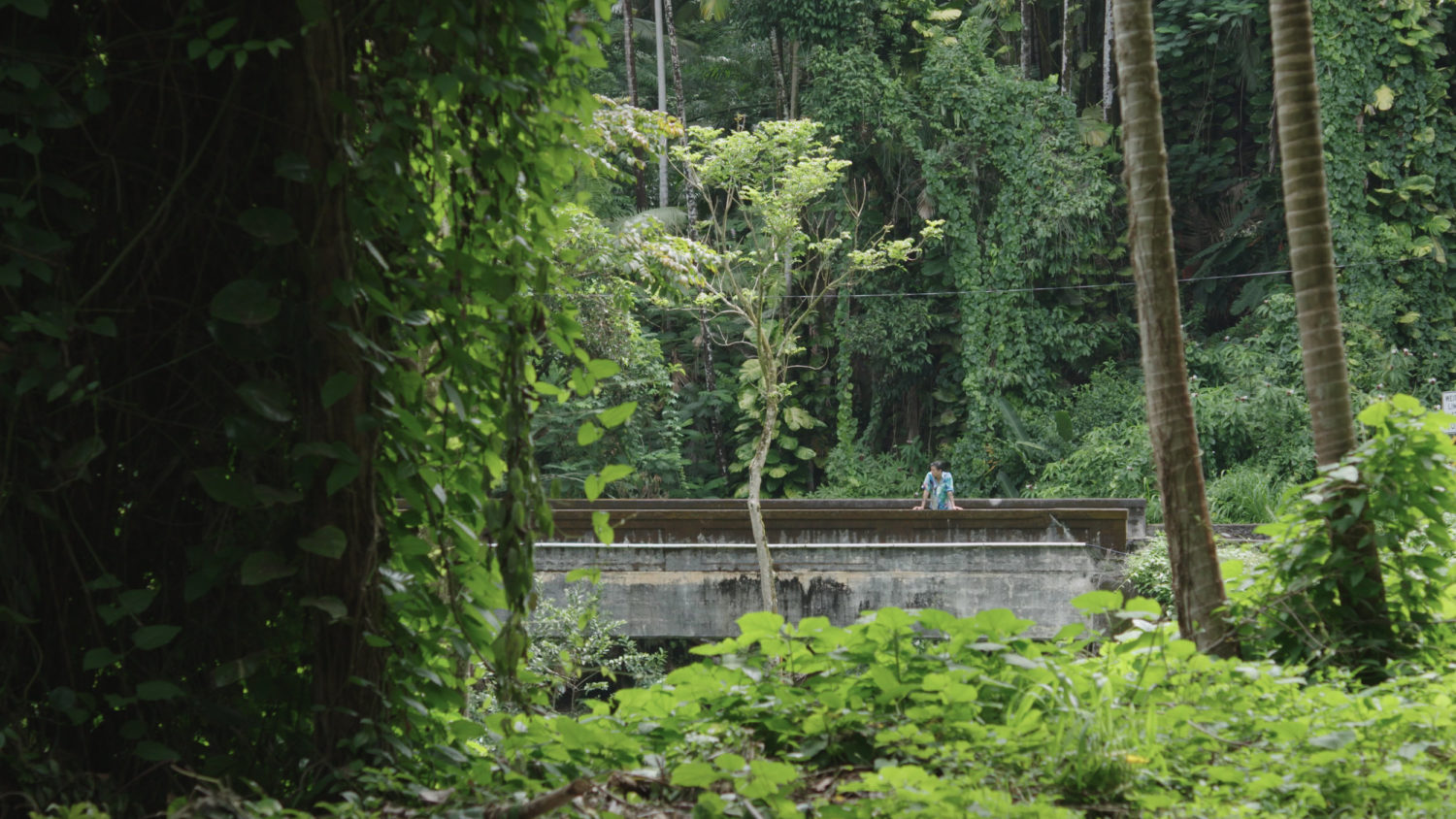
Before I start every film, I try to forget everything and start from zero to see what we can come up with. For me, that’s the intention. To see the everyday anew.
Christopher Makoto Yogi
VB I’m definitely excited for the future and how it seems the local film scene is cross-pollinating. The first batch of graduating classes from UH Manoa’s film program are now mature enough to be producing features. You have professors coming to these students with an explicitly Indigenous perspective.
CMY What was really important was that I was able to be a part of a filmmaking community in Hawai‘i. Up until that point, I didn’t know a lot of filmmakers or people who were interested in cinema. It was really only our small group of friends who were just screwing around and having fun creating things. But then to contextualize it amongst this diverse group of people who are all interested in film and all telling their specific stories, we were encouraged to look at Hawai‘i as a legitimate place to create films. It’s strange that it should seem like a radical thing, but if you’re growing up here, there isn’t really much of an arthouse scene or cinephile culture. A lot of the films we were watching were big Hollywood movies, and it wasn’t until I watched those Taiwanese New Wave films where I was like, ‘Oh, this is possible!’ To couple that with a community of filmmakers, it’s like, if this continues to grow, then this could be a thing. Fast forward a decade later, it has become a thing. It really is exciting. At the most recent Hawai‘i Shorts program at HIFF, I was almost gonna cry, it was so beautiful. The ambition of the filmmakers there, their craft, every year it just seems to level up.
VB It feels like local filmmakers are more in dialogue with each other’s work than ever.
CMY When I was at Mānoa, it seemed like the only avenue people were trying to enter was Hollywood filmmaking because that was how limited our scope was. Now there’s cross-pollination, the work is in dialogue with one another, and the craft is evolving much faster now than it ever seemed to be before.

VB My last question is more practical. For those who would like to tell non-traditional stories such as yours, what was the process of procuring funds for your films like for you, and is it any more easy or difficult from when you first started making films to now?
CMY It’s definitely still difficult. Every independent filmmaker would say that raising funds is the hardest part of the development process. You can have a great idea, you can have tons of passion, but you really do need the resources. We were trying to make Simple Man for a very long time and found it impossible to get the financing. We took a break from raising the money to make August at Akiko’s simply because we were kind of burnt out trying to get the film made. We created it for a shoestring budget and a very small crew, which was like a palate cleanser for us. There was a laboratory-type atmosphere that allowed us to try things, play around, to have fun, to do what we want and not be beholden to anybody. That freedom reinvigorated my own love for filmmaking. After making that film and coming back to Simple Man, I came back with a renewed confidence. The success of August at Akiko’s proved to investors it was possible for us to make a film that is embraced by people all around the world, and that there is an audience for it. Raising money still wasn’t easy [laughs]. But it was easier. We could now say, “Here, this is another film we made for much less money, it premiered at a great festival, it has acclaim…” Financiers could trust us more with something a little bit bigger.
This conversation has been edited for length and clarity.

